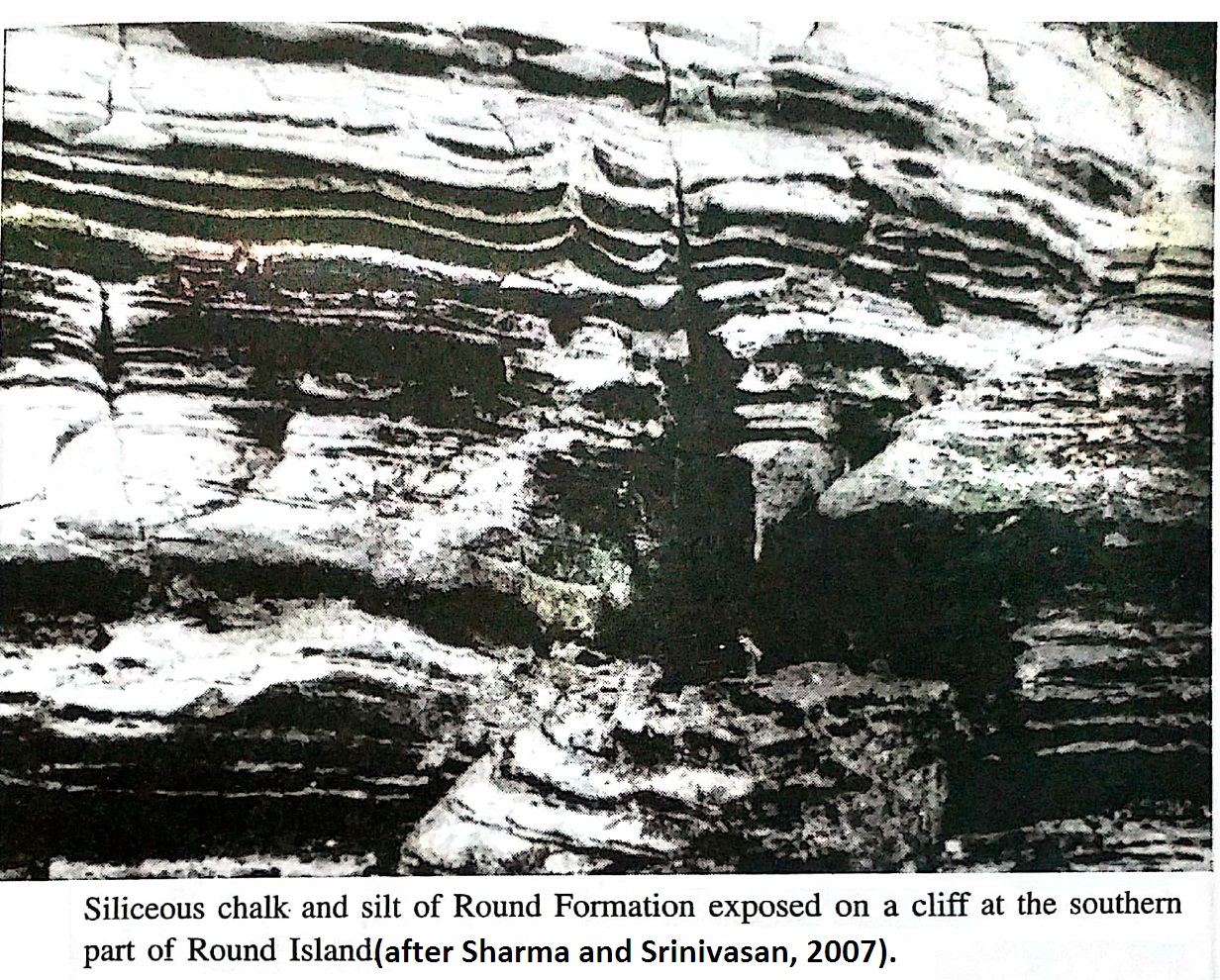Round Fm
Type Locality and Naming
Named after Round Island. Chandra and Guha (1963) introduced the name Round Silt and Chalk for the rock unit younger than Strait Formation without describing lithology or type section. Later, Chatterjee (1967) proposed Round Chalk and Silt Formation, described lithology and nominated Round Island as the type area. Karunakaran et al (1968, 1975) also identified Round Chalk Formation as one of the units in their classifications. Lithological description of ‘White Shale Formation’ of Karunakaran et al., (1964a, b, c; 1965) shows that possibly it is equivalent to Round Formation. Srinivasan and Azmi (1976b) redefined the Round Formation by describing its lithological characteristics and observed that it is best developed in Round Island, the type area.
[Original Publication: Chandra, P.K. and Guha, D.K. (1963) The Neogene rocks from Andamans. Sci. and Cult., 29(4), pp. 202-203.].
[Figure 1 = Regional Map showing location of Round Island. (after Sharma and Srinivasan, 2007).]
[Figure 2 = Geologic map of Round Island. The island is covered by siliceous chalk of the Round Fm. (after Sharma and Srinivasan, 2007).]
Lithology and Thickness
Siliceous chalk with volcanic ash. The Formation is composed mainly of soft to moderately hard, white to grey siliceous chalk and silt with occasional hard calcareous bands and abundant glass shards. The volcanogenic materials are in the form of loosely consolidated volcanic ash with glass shards for which the term ‘Round Ash’ was used by Srinivasan (1980). According to Srinivasan (1980), the Round Formation represents ‘Ash facies’ of the early Neogene explosive volcanism.
[Figure 1: Siliceous chalk and silt of the Round Fm exposed on a cliff at the southern part of Round Island. (after Sharma and Srinivasan, 2007.]
Relationships and Distribution
Lower contact
Lower boundary is on the Strait Fm
Upper contact
Upper boundary is with the Inglis Fm
Regional extent
The white siliceous chalk and silt of Round Formation is a conspicuous lithology in the late Cenozoic sequence of Ritchie’s Archipelago and adjacent islands in the Andaman Sea (1976b). According to Srinivasan and Azmi (1976b), the formation is distributed in Strait Island and Henry Lawrence Island as well. Rocks considered belonging to Round Chalk and Silt Formation were also reported from Interview and adjacent islands by Chatterjee (1967), who identified a number of benthic and planktic foraminiferal species from the rocks of Interview Island, on the basis of which, he assigned a middle to late Miocene age (Sharma and Srinivasan, 2007).
[Figure 1: Detailed geological map of Andaman area (modified after Bandopadhyay 2012) showing locations mentioned in numbers in B. Ghosh et al., 2017, Geo.Soc.London.Memoirs, 47, 95-110)]
GeoJSON
Fossils
Intriguingly, Round Formation is devoid of calcareous microfossils, which Srinivasan and Azmi (1976b) attributed to dissolution of calcareous shells indicating a deep water deposition of the formation. Samples of the Round Formation of the type section were also devoid of siliceous microfossils, which now corresponds to time span of Globoquadrina dehiscens Zone to Globigerinatella insueta Zone.
Age
Depositional setting
Deep water
Additional Information


